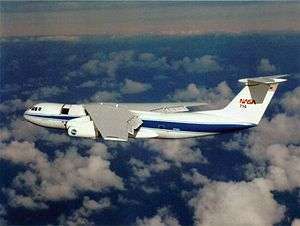Airborne observatory

An airborne observatory is an airplane or balloon with an astronomical telescope. By carrying the telescope to a sufficiently high altitude, the telescope can avoid cloud cover, pollution, and carry out observations in the infrared spectrum, above water vapor in the atmosphere which absorbs infrared radiation. Some drawbacks to this approach are the instability of the lifting platform, the weight restrictions on the instrument, the need to safely recover the gear afterward, and the cost compared to a comparable ground-based observatory.
History
Balloon-borne telescopes have been used for observation from the stratosphere since the Stratoscope I was launched in 1957.[1] A number of different instruments have since been carried aloft by balloons for observation in the infrared, microwave, X-ray and gamma ray bands. The BOOMERanG experiment, flown between 1997–2003,[2] and the MAXIMA, which made flights in 1998 and 1999,[3] were used to map the Cosmic Microwave Background Radiation.
The Kuiper Airborne Observatory, first flown in 1974, consisted of a 36 in (91 cm) aperture Cassegrain reflector carried aloft on a C-141A jet transport to perform infrared observations. In terms of aperture, the largest aircraft-borne instrument to date is a 2.7 m (110 in) reflector telescope carried by a modified Boeing 747 for the Stratospheric Observatory for Infrared Astronomy (SOFIA) project. This instrument was put into use for astronomical observation in 2010. On 29 June 2015, the dwarf planet Pluto passed between a distant star and the Earth producing a shadow on the Earth near New Zealand that allowed SOFIA to study the atmosphere of Pluto.[4]
See also
References
- ↑ Kidd, Stephen (September 17, 1964). "Astronomical ballooning: the Stratoscope program". New Scientist. 23 (409): 702–704. Retrieved 2011-02-28.
- ↑ Masi, S. (2002). "The BOOMERanG experiment and the curvature of the universe". Progress in Particle and Nuclear Physics. 48 (1): 243–261. arXiv:astro-ph/0201137
 . Bibcode:2002PrPNP..48..243M. doi:10.1016/S0146-6410(02)00131-X.
. Bibcode:2002PrPNP..48..243M. doi:10.1016/S0146-6410(02)00131-X. - ↑ Rabii, B.; et al. (July 2006). "MAXIMA: A balloon-borne cosmic microwave background anisotropy experiment". Review of Scientific Instruments. 77 (7). arXiv:astro-ph/0309414
 . Bibcode:2006RScI...77g1101R. doi:10.1063/1.2219723.
. Bibcode:2006RScI...77g1101R. doi:10.1063/1.2219723. - ↑ Veronico, Nicholas A.; Squires, Kate K. (29 June 2015). "SOFIA in the Right Place at the Right Time for Pluto Observations". NASA. Retrieved 1 July 2015.